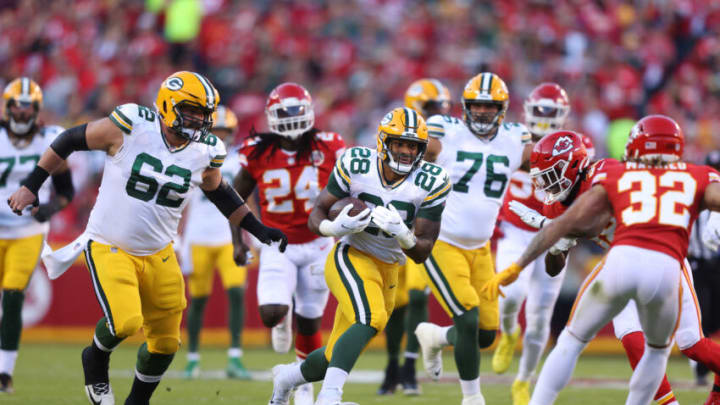
Q: Can the Green Bay Packers generate turnovers?
A: As Matt LaFleur said, this was a “Championship level” performance from the Green Bay Packers defense. However, they were unable to generate any turnovers. The Packers entered the game third in takeaways and had forced at least two turnovers in six of their last seven games. Meanwhile, the Kansas City offense had 19 giveaways–the most in football.
Kevin King had the best opportunity as a pass from Patrick Mahomes went off his hands, and it eventually led to a Chiefs field goal. For a Packers offense that was struggling to move the ball, an extra possession or two was greatly needed and could have resulted in an additional scoring opportunity.
With that said, this is being very nit-picky–the Packer defense was exceptional on Sunday, and they are the sole reason that this game was as close as it was.
Q: Will the Green Bay Packers run game lead the way?
A: Kind of? As I’ve already mentioned, despite Kansas City knowing that Green Bay wanted to lean on the run game, the Packers were still very successful moving the ball on the ground. Jones would average 4.4 yards per rush on 12 carries, and Dillon was nearly unstoppable, averaging almost six yards per carry, but on just eight attempts.
Although the Packers were trailing for much of the game, it’s not as if the score was ever out of hand that they needed to abandon the run game. The decision to get more pass-heavy falls on LaFleur and is something we’ve seen from him on a few occasions in the past when Green Bay falls behind.
When asked about the run-pass mix that finished with 34 passes to 25 carries, LaFleur noted that that was not the plan entering the game, and he also added, “I’d say that’s probably not a good recipe for success, and that proved to be right.”
The Packers were clearly finding success moving the ball, not to mention that a leaning more on the run game would have helped Love out as well. It could have led to more manageable third downs, helped open up the passing game, reduced Kansas City’s opportunities to blitz, and allowed for more play-action, which Love was 5/8 on for 61 yards.
